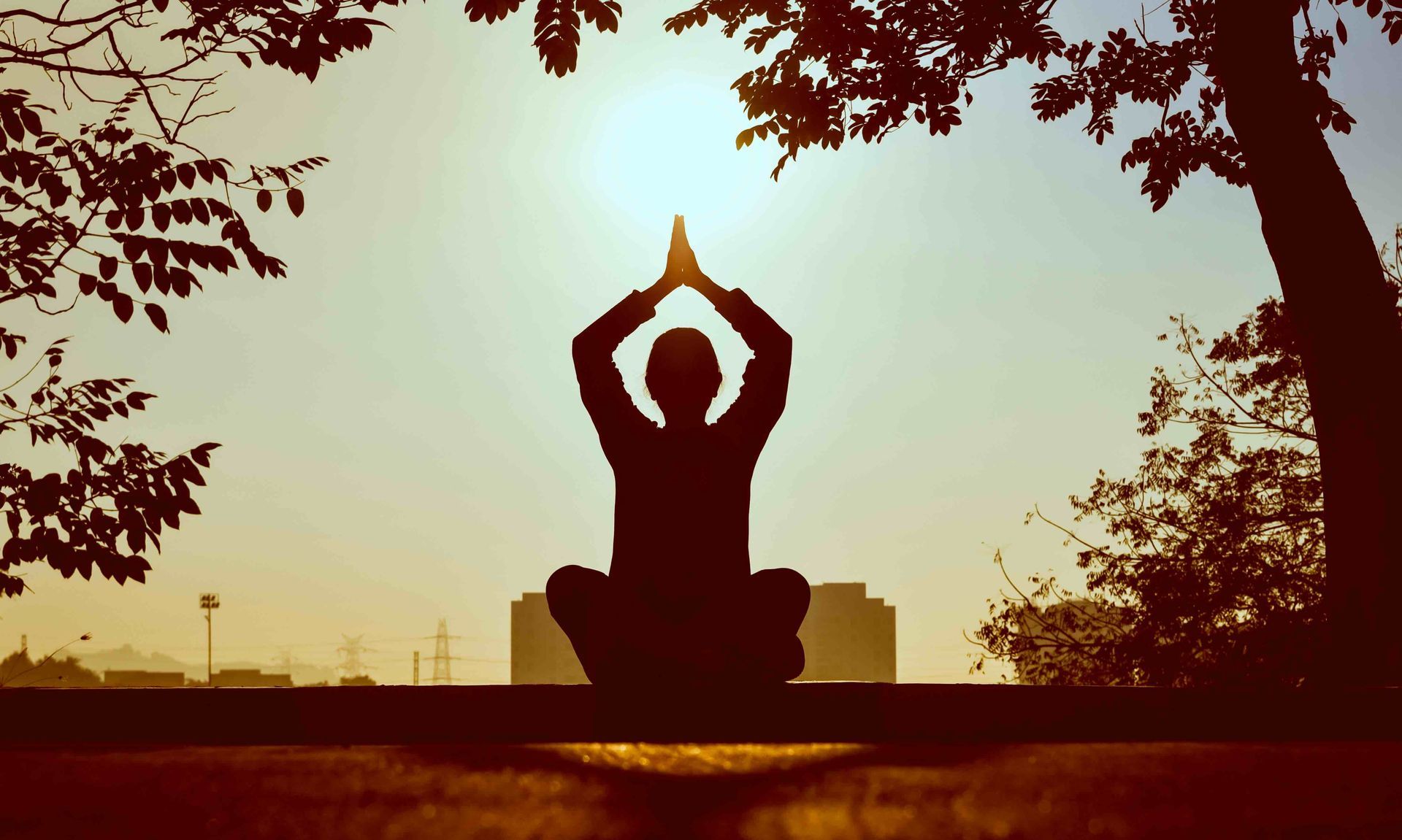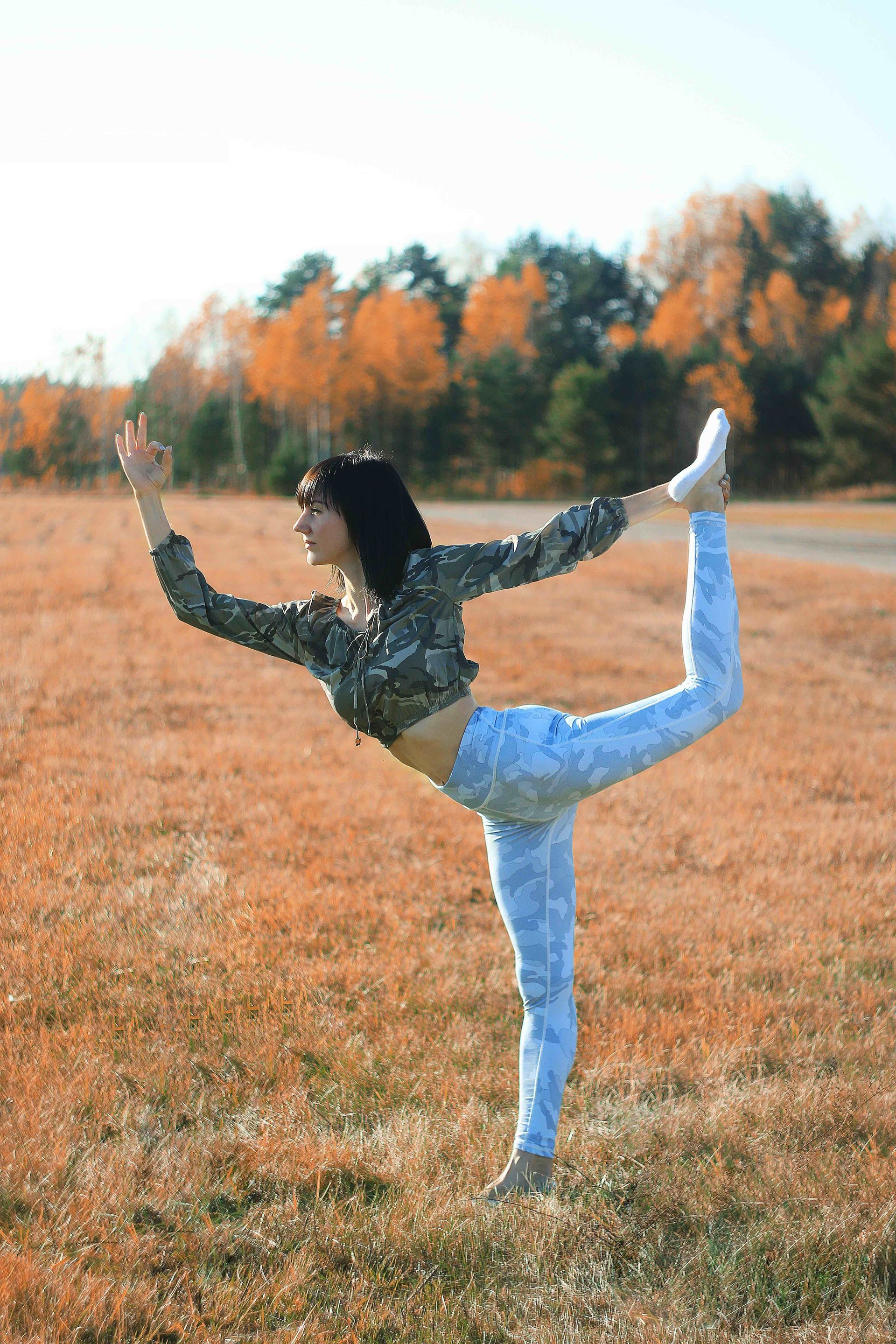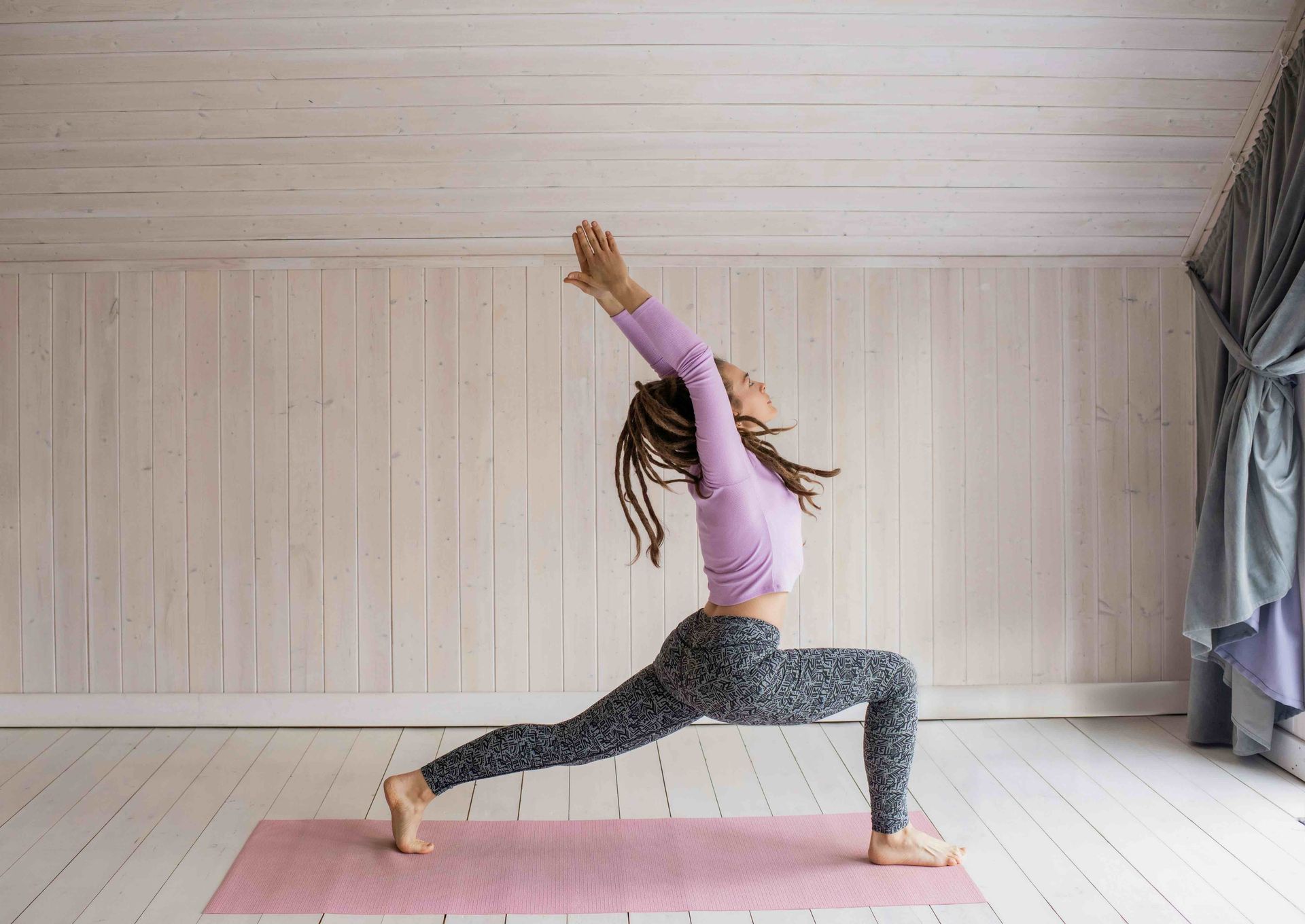
Thanksgiving is a time to come together, share meals, and express gratitude for the blessings in our lives. While the holiday often focuses on external celebrations, it can also be an opportunity for inner reflection and mindfulness. Yoga, with its emphasis on presence and connection, offers a powerful way to cultivate gratitude not only during Thanksgiving but throughout the season. Let’s explore how yoga can deepen your practice of gratitude and enrich your Thanksgiving experience. Why Gratitude Matters for Mental and Emotional Wellbeing Gratitude is more than just saying thank you; it’s a mindset that can transform how we experience life. Scientific studies have shown that practicing gratitude can: Improve Mental Health: Reduce symptoms of depression and anxiety. Strengthen Relationships: Foster deeper connections with others. Boost Resilience: Help you cope with challenges and setbacks. Enhance Overall Wellbeing: Increase feelings of happiness and life satisfaction. Incorporating gratitude into your yoga practice allows you to embody this powerful mindset physically, mentally, and spiritually. Yoga Practices to Cultivate Gratitude Here are some ways to integrate gratitude into your yoga routine this Thanksgiving season: 1. Set an Intention of Gratitude Why: Starting your practice with a clear intention focusing your mind and energy. How to Practice: Before beginning your yoga session, take a moment to reflect on something you’re grateful for. It could be a person, experience, or even the ability to move and breathe. Mantra: Repeat a simple affirmation, such as "I am grateful for this moment" or "I embrace the abundance in my life." 2. Heart-Opening Poses Why: Heart-opening poses encourage feelings of compassion, connection, and gratitude. 3. Grounding Poses Why: Grounding poses help you feel rooted and connected to the earth, fostering appreciation for stability and support. Mindfulness Tip: With each inhale, imagine drawing in gratitude, and with each exhale, release tension or negativity. 4. Gratitude Meditation Why: Meditation enhances your awareness and anchors your gratitude practice. How to Practice: Sit comfortably and close your eyes. Reflect on three things you’re grateful for, visualizing them clearly. Notice how this makes you feel in your body and mind. Breathing Technique: Try alternate nostril breathing (Nadi Shodhana) to calm the mind and enhance focus. Creating a Thanksgiving Yoga Ritual Make yoga part of your Thanksgiving traditions with this simple ritual: Begin with Gratitude: Light a candle and take a few moments to reflect on what you’re thankful for. Practice a Heart-Opening Flow: Include poses like Camel, Upward Dog, and Bridge. Meditate on Abundance: Spend 5-10 minutes in a gratitude-focused meditation. End with Savasana: Seal your practice with deep relaxation and visualization. Carrying Gratitude Beyond the Mat Yoga teaches us that the lessons we learn on the mat can be applied to our daily lives. This Thanksgiving season, let your practice inspire you to: Express Gratitude: Take time to thank the people who bring joy and support to your life. Find Joy in Small Moments: Appreciate the simple pleasures, like a warm cup of tea or a beautiful sunset. Practice Mindful Giving: Offer kindness and generosity to others, embodying the spirit of gratitude. Thanksgiving is a beautiful reminder to pause and reflect on the abundance in our lives. By incorporating yoga into your gratitude practice, you can deepen your connection to yourself and others, fostering a sense of peace and fulfillment. This season, let your yoga mat become a space for cultivating gratitude and celebrating the beauty of the present moment. Take a deep breath, open your heart, and give thanks—both on and off the mat.

As summer fades and fall arrives, nature reminds us of the beauty of change. The crisp air, falling leaves, and shorter days invite us to slow down, reflect, and realign ourselves. However, transitions—whether seasonal or personal—can be challenging. Yoga offers a grounding and nurturing practice that helps us embrace change with grace and resilience. Here’s how yoga can support your journey into fall and help you find balance during this seasonal shift. The Energy of Fall Fall represents a time of letting go, much like trees shedding their leaves. It’s a season to release what no longer serves us and make space for new growth. As the pace of life often quickens with back-to-school routines, holidays on the horizon, and darker evenings, it’s easy to feel overwhelmed. Yoga helps us stay grounded, balanced, and open to the lessons that change brings. How Yoga Supports Seasonal Transitions Grounding Practices: Fall’s energy can feel scattered as we adjust to new rhythms. Grounding yoga poses help you stay rooted, calm, and centered during this time of transition. Emotional Release: Just as leaves fall effortlessly, yoga encourages us to let go of emotional baggage and old patterns that weigh us down. Building Inner Warmth: As temperatures cool, dynamic flows and breathwork generate warmth and energy, supporting both body and mind. Reflection and Introspection: Yoga invites us to turn inward, fostering self-awareness and mindfulness as we align with the quieter, reflective energy of autumn. Breathwork for Fall Breathwork (pranayama) is a powerful tool for navigating change. Try these practices: Alternate Nostril Breathing (Nadi Shodhana): Balances energy and calms the mind, helping you stay centered. Ocean Breath (Ujjayi): Generates inner warmth and steadies the mind, perfect for cooler days. Creating a Fall Yoga Ritual Set Intentions: Begin your practice by reflecting on what you want to release and what you hope to invite into your life this season. Incorporate Nature: Practice outdoors if possible or bring autumn elements like leaves or candles into your space. Stay Consistent: Even a short daily practice can help you stay grounded and connected as the season unfolds. Fall is a season of transformation, reminding us of the impermanence and beauty of life. Yoga serves as a steady companion, helping us navigate this transition with mindfulness and grace. As you move through the changing rhythms of fall, let your yoga practice be a source of stability, warmth, and inspiration. Embrace the season’s lessons, and trust that, like the trees, you too are creating space for growth and renewal.

In today’s fast-paced world, we often find ourselves juggling responsibilities, meeting deadlines, and managing expectations—both our own and those of others. Amidst this chaos, self-compassion and emotional balance can feel elusive. Yoga, however, offers a sanctuary where we can reconnect with ourselves, cultivate kindness, and find harmony within. Let’s explore how yoga fosters self-compassion and emotional balance, helping us navigate life’s challenges with grace and resilience. The Connection Between Yoga and Self-Compassion Self-compassion involves treating ourselves with the same kindness and understanding that we extend to a friend in need. It’s about embracing imperfections and recognizing that struggles are a shared part of the human experience. Yoga naturally nurtures self-compassion through its emphasis on mindfulness, acceptance, and non-judgment. Mindful Awareness: Yoga encourages us to tune into the present moment, observing our thoughts and feelings without judgment. This practice helps us become more aware of self-critical tendencies and replace them with kindness. Acceptance of Limitations: Each yoga pose teaches us to honor our body’s unique abilities and limitations. By focusing on progress rather than perfection, we learn to let go of unrealistic expectations. Connection to Breath: Breathwork (pranayama) anchors us in the present, creating a sense of calm and helping us respond to challenges with compassion rather than reactivity. How Yoga Cultivates Emotional Balance Emotional balance is the ability to experience and process emotions without becoming overwhelmed or detached. Yoga fosters this balance by creating space for emotional release, resilience, and self-awareness. Releasing Stored Emotions: Certain yoga poses, such as hip openers and heart openers, release tension stored in the body. These physical releases often correlate with emotional release, allowing us to process and let go of unresolved feelings. Building Resilience: Holding challenging poses teaches us to stay present and breathe through discomfort. This practice builds emotional resilience, helping us face life’s difficulties with patience and equanimity. Enhancing Self-Awareness: Yoga’s introspective nature encourages us to observe our emotional patterns. Over time, this awareness helps us identify triggers, manage reactions, and cultivate healthier responses. Tips for Deepening Your Practice Set an Intention: Begin each yoga session by setting an intention focused on self-kindness or emotional balance. Journal Your Experience: Reflect on your yoga practice and any emotions that arise. Journaling can provide clarity and help you track your growth. Practice Gratitude: After your practice, take a moment to appreciate your efforts and the care you’re giving yourself. Seek Support: If certain emotions feel overwhelming, consider working with a yoga therapist or counselor to deepen your healing journey. Yoga is a powerful tool for cultivating self-compassion and emotional balance. By embracing the practice with an open heart, you can learn to navigate life’s ups and downs with greater ease and kindness. Remember, self-compassion isn’t about being perfect; it’s about showing up for yourself—just as you are—with love and understanding. So, roll out your mat, take a deep breath, and let yoga guide you toward a more compassionate and balanced way of being.

Summer often evokes images of relaxation, sunshine, and carefree moments. However, for many, it’s also a season of packed schedules, heightened responsibilities, and unexpected stressors. Between family vacations, work deadlines, and social obligations, it can be challenging to maintain a sense of balance. That’s where yoga can play a transformative role. This guide will explore how yoga can help you navigate the summer months with a sense of calm, focus, and self-compassion. Understanding Summer Stress While summer is often seen as a time to unwind, it can come with its own unique pressures, such as: Overcommitting: Filling your calendar with too many events or activities. Heat and Fatigue: Dealing with high temperatures and disrupted routines. Work-Life Imbalance: Balancing professional responsibilities with summer activities. Financial Strain: Budgeting for vacations, camps, or back-to-school preparations. Acknowledging these stressors is the first step in addressing them. Incorporating yoga into your routine can provide the tools to stay grounded and maintain balance. How Yoga Supports Balance Yoga is more than a physical practice; it’s a holistic approach to wellbeing. Here’s how yoga can help manage summer stress: Promotes Mindfulness: Yoga encourages you to focus on the present moment, helping you let go of worries about the past or future. Reduces Tension: Poses and stretches release physical tension caused by stress or long hours at a desk. Regulates Emotions: Breathing exercises (pranayama) calm the nervous system, reducing anxiety and irritability. Boosts Energy: Gentle flows and inversions combat fatigue, leaving you refreshed and revitalized. Encourages Self-Care: A regular yoga practice reminds you to prioritize your needs, even during busy seasons. Tips for Balancing Work, Play, and Self-Care Set Boundaries: Learn to say no to activities that overextend you. Protect your time for rest and self-care. Schedule Yoga Time: Treat your yoga practice as a non-negotiable appointment. Stay Hydrated: Drink plenty of water to support your body during the summer heat and your yoga sessions. Practice Outdoors: Connect with nature by practicing yoga in a park or garden during cooler parts of the day. Listen to Your Body: Be gentle with yourself and adjust your practice to suit your energy levels and needs. Summer doesn’t have to be a season of overwhelm. By integrating yoga into your daily routine, you can create a sense of balance between work, play, and self-care. Remember, yoga isn’t about perfection—it’s about showing up for yourself and honoring your unique journey. So, roll out your mat, take a deep breath, and let this summer be one of mindfulness, movement, and meaningful self-care.

Yoga is often celebrated for its physical benefits—flexibility, strength, and balance—but its impact on mental health is equally profound. Beyond the movements and postures lies a deeper connection between the body, mind, and breath. Each yoga pose serves as a stepping stone to greater mindfulness, emotional regulation, and mental clarity. Let’s explore why every yoga pose matters for mental health and how you can harness the power of mindfulness in motion. The Connection Between Yoga and Mental Health Yoga is much more than physical exercise; it’s a holistic practice that integrates the mind and body. Scientific studies have shown that yoga can reduce stress, anxiety, and depression, while improving overall emotional resilience. Here’s why: Mindful Movement: Yoga encourages awareness of each movement and breath, fostering a state of presence and reducing rumination. Regulated Nervous System: Poses and breathing techniques help activate the parasympathetic nervous system, promoting relaxation and reducing stress. Emotional Release: Certain poses open areas of the body where stress and emotions are often stored, such as the hips and chest. Enhanced Focus: The concentration required for balancing poses and controlled breathing improves mental clarity and focus. Why Every Pose Matters Each yoga pose, no matter how simple or advanced, plays a specific role in promoting mental health. Here’s how: 1. Grounding Poses Examples: Mountain Pose (Tadasana), Child’s Pose (Balasana), Warrior II (Virabhadrasana II) Grounding poses help you connect to the present moment and foster a sense of stability and security. These poses are particularly beneficial during times of anxiety or emotional overwhelm. Mental Health Benefit: Provides a sense of calm and rootedness, reducing feelings of uncertainty and fear. Mindfulness Tip: Focus on the sensations in your feet and legs, imagining roots growing into the earth. 2. Heart-Opening Poses Examples: Cobra Pose (Bhujangasana), Camel Pose (Ustrasana), Bridge Pose (Setu Bandhasana) Heart-opening poses stretch the chest and shoulders, areas where many people hold tension and emotional stress. These poses encourage vulnerability and openness. Mental Health Benefit: Releases stored emotions and fosters feelings of compassion and connection. Mindfulness Tip: Breathe deeply into your chest and visualize releasing any emotional heaviness. 3. Balancing Poses Examples: Tree Pose (Vrikshasana), Eagle Pose (Garudasana), Dancer’s Pose (Natarajasana) Balancing poses require focus and stability, encouraging you to remain present and centered. They highlight the connection between mental focus and physical steadiness. Mental Health Benefit: Improves concentration and builds resilience against distractions. Mindfulness Tip: Fix your gaze on a single point and synchronize your breath with your movement. 4. Twisting Poses Examples: Seated Spinal Twist (Ardha Matsyendrasana), Revolved Triangle Pose (Parivrtta Trikonasana) Twists detoxify the body by stimulating the digestive organs and improving circulation. They also symbolically represent letting go of what no longer serves you. Mental Health Benefit: Encourages release and renewal, reducing feelings of being stuck or overwhelmed. Mindfulness Tip: Visualize wringing out stress and negativity with each twist. 5. Inversions Examples: Downward Dog (Adho Mukha Svanasana), Legs-Up-The-Wall Pose (Viparita Karani), Headstand (Sirsasana) Inversions shift your perspective—literally and figuratively. By reversing blood flow, these poses energize the body and calm the mind. Mental Health Benefit: Reduces stress, boosts mood, and enhances mental clarity. Mindfulness Tip: Focus on the sensation of blood flowing toward your head and the feeling of lightness. 6. Restorative Poses Examples: Savasana (Corpse Pose), Reclining Bound Angle Pose (Supta Baddha Konasana), Child’s Pose (Balasana) Restorative poses allow the body and mind to fully relax and integrate the benefits of your practice. These poses are essential for recovery and emotional balance. Mental Health Benefit: Promotes deep relaxation, reduces cortisol levels, and fosters emotional healing. Mindfulness Tip: Close your eyes and focus on the rhythm of your breath, letting go of any lingering tension. The Role of Breath and Mindfulness Mindful breathing, or pranayama, is the thread that connects every yoga pose. By focusing on your breath, you can: Anchor yourself in the present moment. Calm the fight-or-flight response. Enhance the mind-body connection. Try incorporating alternate nostril breathing (Nadi Shodhana) or ocean breath (Ujjayi) into your practice for added mental health benefits. Building a Mindful Yoga Practice To maximize the mental health benefits of yoga: Practice Regularly: Consistency is key. Even 10-15 minutes a day can make a difference. Set Intentions: Begin each session by setting an intention, such as cultivating peace or releasing stress. Listen to Your Body: Respect your limits and modify poses as needed to avoid frustration or injury. Create a Ritual: Light a candle, play calming music, or use essential oils to enhance your practice. Every yoga pose matters because each one offers a unique opportunity to connect with yourself on a deeper level. By approaching your practice with mindfulness, you can harness the transformative power of yoga to support your mental health and overall wellbeing. So, the next time you step onto your mat, remember: it’s not about achieving the perfect pose. It’s about embracing the journey, one mindful movement at a time.

Life is full of highs and lows, and emotional overwhelm can sometimes feel like a storm we can’t escape. Whether it’s caused by stress, loss, or simply the demands of daily life, these moments can leave us feeling disconnected and untethered. Yoga offers a powerful toolkit to help ground ourselves, calm our minds, and reconnect with the present moment during these challenging times. Here’s how you can use yoga to stay grounded and centered when emotions threaten to take over. 1. Start with the Breath One of the simplest and most effective ways to ground yourself is through mindful breathing. When emotions run high, our breath often becomes shallow and erratic. Deliberately slowing down your breath can signal to your body that it’s safe to relax. Practice: Diaphragmatic Breathing Sit or lie down in a comfortable position. Place one hand on your belly and the other on your chest. Inhale deeply through your nose, allowing your belly to rise. Exhale slowly through your mouth, letting your belly fall. Repeat for 5-10 breaths, focusing on the sensation of your breath. This practice helps calm the nervous system and brings you back to the present moment. 2. Grounding Yoga Poses Certain yoga poses are particularly effective for cultivating a sense of grounding and stability. These poses help you connect with the earth, root down, and create a sense of safety. Mountain Pose (Tadasana): Stand tall with your feet firmly planted on the ground. Spread your toes and press evenly into all four corners of your feet. Imagine roots growing from your feet into the earth. Child’s Pose (Balasana): Kneel on the mat and lower your torso over your thighs, extending your arms forward or placing them alongside your body. Rest your forehead on the mat and feel the support beneath you. Seated Forward Fold (Paschimottanasana): Sit with your legs extended and gently fold forward, reaching for your shins or feet. Allow your body to relax into the stretch. Tree Pose (Vrikshasana): Stand on one leg and place the sole of the opposite foot on your ankle, calf, or thigh. Find balance and focus on a steady point in front of you, grounding through your standing leg. 3. Incorporate Gentle Movement Sometimes, emotional overwhelm can leave us feeling restless or stuck. Gentle, flowing movements can help release pent-up energy and bring a sense of calm. Practice: Cat-Cow Stretch (Marjaryasana-Bitilasana) Start on your hands and knees in a tabletop position. On an inhale, arch your back, lift your head, and tilt your pelvis upward (Cow Pose). On an exhale, round your spine, tuck your chin, and draw your pelvis inward (Cat Pose). Move slowly with your breath for 8-10 rounds. This rhythmic movement helps release tension in the spine and promotes relaxation. 4. Focus on Body Awareness When emotions feel overwhelming, reconnecting with your physical body can help ground you. Yoga encourages you to tune into your body’s sensations and become more present. Body Scan Meditation: Lie down in Savasana (Corpse Pose) and mentally scan your body from head to toe. Notice any areas of tension or discomfort and breathe into them. This practice fosters awareness and relaxation. 5. End with Restorative Poses Restorative yoga poses are ideal for calming the nervous system and promoting a deep sense of grounding. Legs-Up-The-Wall Pose (Viparita Karani): Lie on your back with your legs extended up a wall. Rest your arms at your sides and focus on your breath. This pose helps reduce stress and bring a sense of calm. Savasana (Corpse Pose): Finish your practice by lying flat on your back with your arms and legs relaxed. Close your eyes and let your body melt into the mat. 6. Use Affirmations and Intentions While practicing yoga, incorporate affirmations to anchor your mind and emotions. Repeat phrases like: “I am safe and supported.” “I am grounded and calm.” “This moment will pass.” Setting an intention at the beginning of your practice, such as “I will find peace in the present moment,” can also provide a guiding focus. 7. Create a Safe and Soothing Environment To deepen your grounding practice, create a calming atmosphere: Use a quiet, clutter-free space for your practice. Light a candle or use essential oils like lavender or sandalwood for relaxation. Play soothing music or nature sounds to enhance the experience. Emotional overwhelm is a natural part of life, but yoga provides a pathway to navigate these storms with grace and resilience. By connecting with your breath, moving mindfully, and grounding yourself in the present moment, you can find stability and calm amidst the chaos. Remember, yoga is a practice of self-compassion. Be gentle with yourself and know that it’s okay to take things one breath, one pose, and one moment at a time. Your mat is always there for you, ready to support you when you need it most.

As the chill of winter fades and the promise of spring blooms around us, it’s the perfect time to shake off the sluggishness of colder months and welcome renewed energy into our lives. Just as nature awakens and blossoms, our bodies and minds crave movement and vitality. Yoga offers a wonderful way to transition into spring, invigorating the body, clearing the mind, and reconnecting with our inner energy. Here are some energizing yoga flows and practices to awaken your body after winter and embrace the new season with open arms. Why Yoga is Perfect for Spring Renewal During winter, many of us slow down and hibernate, leading to tight muscles, reduced flexibility, and a buildup of stagnation in the body and mind. Yoga helps: Reawaken Energy: Flowing movements stimulate circulation and activate dormant muscles. Detoxify: Twists and dynamic sequences promote detoxification by stimulating internal organs. Boost Mood: The combination of movement and breathwork lifts the spirits and combats winter blues. Increase Flexibility: Gradual stretching helps release tension built up during months of inactivity. Breathwork to Awaken Energy In addition to movement, incorporating pranayama (breathwork) can enhance your spring yoga practice. Try Kapalabhati (Skull Shining Breath) to energize and clear the mind: Sit comfortably with a straight spine. Take a deep inhale and exhale sharply through your nose, pulling your belly inward with each exhale. Repeat for 30 seconds to 1 minute. Tips for Embracing Spring with Yoga Practice Outdoors: Take your yoga practice outside to connect with nature and soak up the revitalizing energy of spring. Set Intentions: Use your practice to set positive intentions for the season, focusing on growth, renewal, and self-care. Stay Consistent: Commit to a regular practice, even if it’s just 10-15 minutes a day, to maintain momentum and energy. Spring is a time of transformation and renewal. By incorporating energizing yoga flows into your routine, you can awaken your body, clear your mind, and embrace the season’s vibrancy. Let your practice be a celebration of movement, growth, and the endless possibilities that spring brings. Roll out your mat, take a deep breath, and spring into movement—your body and mind will thank you.

Setting goals can often feel overwhelming. How do you prioritize what truly matters? How do you stay motivated when life gets busy? Combining yoga and journaling offers a mindful, intentional approach to goal-setting that aligns your aspirations with your deeper values and inner wisdom. By integrating these two practices, you can cultivate clarity, focus, and balance as you map out your path forward. Why Combine Yoga and Journaling? Yoga and journaling complement each other beautifully. Yoga helps quiet the mind and connect with your body, creating space for reflection and insight. Journaling, on the other hand, allows you to capture these insights and transform them into actionable steps. Together, they provide a holistic way to set meaningful goals that resonate with your authentic self. Step 1: Create a Grounded Space Before diving into goal-setting, set the tone for your practice: Find a quiet space: Choose a spot where you feel calm and focused. Gather your tools: You’ll need a yoga mat, a journal, and a pen. Set an intention: Begin with a simple intention, such as “I am open to discovering what matters most to me.” Step 2: Practice a Goal-Setting Yoga Flow Start with a yoga sequence designed to cultivate clarity and focus. This could include: Child’s Pose (Balasana): Begin in stillness to ground yourself. Cat-Cow Stretch (Marjaryasana-Bitilasana): Flow with your breath to release tension and create space. Warrior II (Virabhadrasana II): Tap into your inner strength and focus. Tree Pose (Vrikshasana): Find balance and stability as you envision your goals. Seated Forward Fold (Paschimottanasana): Reflect inward and allow ideas to surface. Savasana (Corpse Pose): Rest and absorb the insights from your practice. During your flow, focus on your breath and remain present. This helps clear mental clutter and creates the mental clarity needed for journaling. Step 3: Journaling for Vision and Clarity After your yoga practice, sit down with your journal. Use the following prompts to guide your reflections: What do I value most in life right now? What areas of my life feel aligned? What areas feel out of balance? What brings me joy, energy, and fulfillment? What is one habit or goal that could enhance my wellbeing? What small steps can I take to move toward this goal? Write freely and without judgment. Let your thoughts flow naturally, and don’t worry about perfection. Step 4: Set Meaningful Goals From your journaling reflections, identify 1-3 key goals. Ensure they align with your values and are achievable. Use the SMART framework: Specific: Clearly define your goal. Measurable: Determine how you’ll track progress. Achievable: Ensure your goal is realistic. Relevant: Align your goal with your priorities. Time-Bound: Set a timeline for achieving your goal. For example, instead of saying, “I want to practice more yoga,” a SMART goal might be, “I will attend two yoga classes per week for the next month.” Step 5: Revisit and Reflect Goal-setting is an ongoing process. Incorporate regular yoga and journaling sessions to: Reflect on your progress. Celebrate small wins. Adjust your goals as needed. This mindful approach keeps you connected to your intentions and prevents burnout or frustration. Combining yoga and journaling for goal-setting is a transformative practice that nurtures your body, mind, and spirit. It allows you to approach your aspirations with clarity, purpose, and compassion. By taking the time to connect with yourself through these practices, you can set meaningful goals that bring you closer to the life you envision. So, roll out your mat, grab your journal, and take the first step toward a clearer, more intentional future. Your journey starts today.

As the vibrant energy of summer gives way to the golden hues of fall, nature subtly invites us to slow down and turn inward. The crisp air, shorter days, and falling leaves create the perfect backdrop for reflection and personal growth. Fall is more than just a transition between seasons; it’s an opportunity to pause, reassess, and nurture your inner self. Let’s explore how you can embrace this season of change and use it as a time for deep reflection and inner growth. Why Fall Encourages Reflection Fall embodies the art of letting go. Just as trees shed their leaves, we too can release what no longer serves us. This season’s quieter, cooler energy invites us to: Reflect on the Past Year: Consider what has worked, what hasn’t, and what lessons you’ve learned. Set Intentions for Renewal: Use the reflective energy of fall to clarify what you want to carry forward and what you wish to leave behind. Create Space for Stillness: The natural slowing of the season encourages us to embrace moments of stillness and introspection. Practices for Reflection and Growth in Fall Incorporate these mindful practices into your routine to align with the season’s energy: Journaling Why: Journaling is a powerful tool for self-reflection and personal growth. Prompt: "What am I ready to let go of this season, and what am I ready to embrace?" Mindful Walks in Nature Why: Connecting with nature helps ground you and align your energy with the rhythms of the earth. Meditation for Letting Go Why: Meditation helps calm the mind and create space for self-awareness. Yoga for Grounding Why: Yoga supports both physical and emotional balance, making it an ideal practice during seasonal transitions. Creating a Fall Reflection Ritual Set the Scene: Choose a quiet space and enhance it with candles, cozy blankets, or fall-inspired scents like cinnamon or cedarwood. Start with Gratitude: Begin your ritual by reflecting on what you’re grateful for in your life right now. Engage in Reflection: Use journaling, meditation, or quiet contemplation to explore your thoughts and feelings. Set Intentions: Write down one or two intentions for the remainder of the year, focusing on areas where you want to grow or change. The Importance of Slowing Down In a world that often glorifies busyness, fall reminds us of the power of slowing down. By embracing the slower pace of the season, you give yourself permission to: Reconnect with Yourself: Deepen your understanding of your desires, values, and goals. Recharge Your Energy: Rest and restoration are essential for personal growth. Cultivate Inner Peace: Stillness creates space for clarity and emotional balance. Fall is a season of transformation, offering a gentle reminder that growth often requires letting go. By slowing down and embracing the reflective energy of autumn, you can create space for meaningful inner growth. This fall, take time to pause, reflect, and nurture your inner self. As the leaves fall, let them inspire you to release what no longer serves you and make room for the new opportunities and growth that await.

We’ve all been there—setting goals to adopt healthier habits, only to find ourselves falling back into familiar routines. Whether it’s eating better, exercising consistently, or cultivating mindfulness, breaking old patterns and creating lasting change can feel like an uphill battle. This is where yoga can be a powerful ally. Let’s explore how yoga helps build healthy habits and break the cycles of behavior that no longer serve us. 1. Awareness: The First Step Toward Change One of the foundational principles of yoga is mindfulness—the practice of being present in the moment. When you step onto your mat, yoga encourages you to tune into your body and mind. Are you holding tension in certain areas? Is your mind racing with thoughts? This heightened awareness helps you identify patterns that might be holding you back, whether it’s physical habits like slouching or emotional responses like stress-eating. Through regular practice, you become more attuned to your actions and their underlying triggers, creating space to respond intentionally rather than react automatically. 2. Consistency: Building a Routine That Sticks Yoga emphasizes discipline, or “tapas” in Sanskrit. By committing to even a short daily practice, you cultivate a sense of consistency and structure. This routine can spill over into other areas of life, making it easier to establish healthy habits like morning meditation, meal prepping, or getting regular exercise. Starting small is key. A 10-minute yoga practice each day can build the momentum needed to create sustainable change. 3. Replacing Old Patterns with New Ones Breaking old habits often requires replacing them with healthier alternatives. Yoga offers tools to do this through breathwork, movement, and mindfulness. For example: Stress Relief: Instead of turning to unhealthy coping mechanisms, yoga teaches you to use deep breathing and calming poses to manage stress. Improved Focus: Practicing yoga helps quiet mental chatter, making it easier to concentrate on your goals. Emotional Regulation: Yoga encourages self-compassion and helps you process emotions, reducing the need for escapist behaviors. 4. Rewiring the Mind-Body Connection Yoga helps you build a stronger connection between your mind and body, which is essential for lasting change. Many habits stem from disconnection—mindlessly eating, avoiding movement, or ignoring stress signals. Through poses, breathwork, and meditation, yoga bridges this gap, making it easier to listen to your body’s needs and act in alignment with them. 5. Creating a Supportive Environment A yoga studio or community can be a powerful source of support when working to build new habits. Practicing alongside others fosters a sense of accountability and shared growth. It’s easier to stay motivated when you’re part of a community that encourages healthy choices. 6. Letting Go of Perfection Breaking old patterns isn’t about being perfect; it’s about progress. Yoga teaches us to embrace where we are in the moment, to let go of judgment, and to approach change with curiosity and patience. This mindset makes it easier to bounce back from setbacks and stay on track. Practical Tips to Use Yoga for Habit Building Set an Intention: Begin each practice by setting an intention related to your habit. For example, “I am cultivating balance in my life.” Focus on Breathwork: Use calming breathing techniques to center yourself during stressful moments. Consistency Over Intensity: Aim for regular practice, even if it’s just 5-10 minutes a day. Track Your Progress: Keep a journal to reflect on how your yoga practice is influencing your habits. Join a Class: Practicing with others can keep you inspired and accountable. Building healthy habits and breaking old patterns is a journey that takes time, patience, and dedication. Yoga provides the tools and mindset needed to navigate this journey with grace. By fostering awareness, creating structure, and nurturing self-compassion, yoga helps you move closer to the version of yourself you aspire to be. Whether you’re stepping onto the mat for the first time or deepening an existing practice, remember: every breath, pose, and intention is a step toward transformation. Embrace the journey, and let yoga guide you toward healthier, more fulfilling habits.




